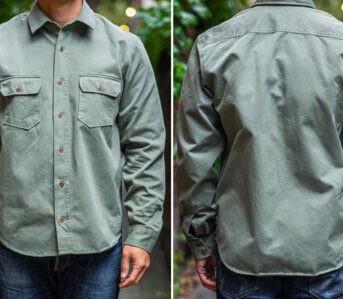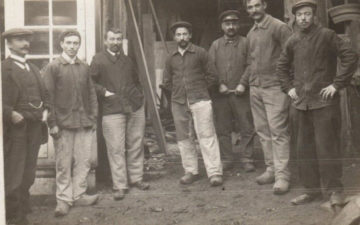Like so much of the clothing we love, lineman boots started their journey as pure utilitarian workwear. But, unlike other workwear silhouettes we love, chore jackets, painter pants, and the like, lineman boots have a really specific use and unique features to boot.
Lineman boots were developed as work boots for linemen or lineworkers — professionals whose job involves work on electrical transmission lines, which involved scaling poles and trees without a ladder. The development of the profession — and, consequently, of lineman boots — is closely tied with the introduction and expansion of electricity networks in America in the late 19th and early 20th centuries.
With the profession still alive today, lineman boots are still produced, and there are also some heritage brands making their own amazing versions. We thought it was time to break down the lineman boot, looking at what exactly it is, where it came from, and why it matters.
What is a Lineman Boot?
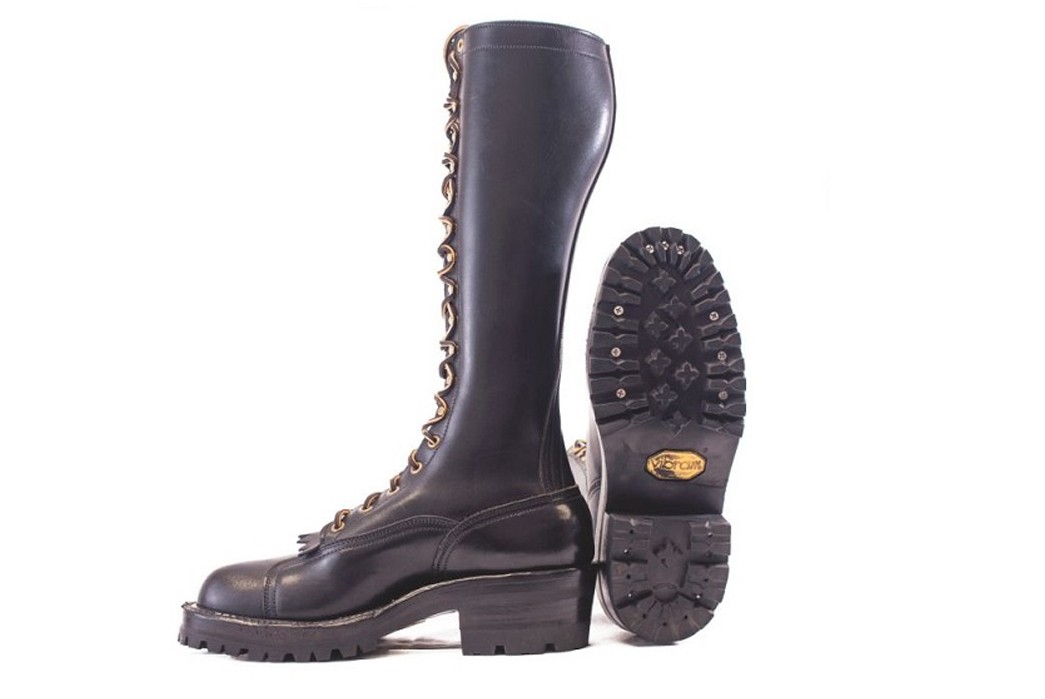
Lineman Boots via Nick’s Handmade Boots
Scaling poles, trees, and pylons every day is going to put a lot of stress on your footwear, so line workers needed a leather boot that was going to be able to deal with their difficult, perilous work. This led to lineman boots having some very distinctive features that were originally developed for safety, but also make them unique in the world of boots.
The most distinctive feature of the lineman boots is the lineman patch. This leather patch is either a part of the construction or an addition sewn into the welt and secured with its own eyelet on the inside of each boot. The patches are intended to protect the boot from the wear and stress that comes from shimmying up a pole.

Lineman Patch via Stitchdown
The patch isn’t the only feature though, lineman boots are typically taller than your average 6-8-inch work boot. Lineworkers needed to protect more of their lower leg whilst climbing, so a majority of lineman boots are 12 inches. Though, there are countless examples of linemans that are even taller, some even being thigh-high at a massive 32 inches! The taller the boot, the more the lineman’s legs are protected.
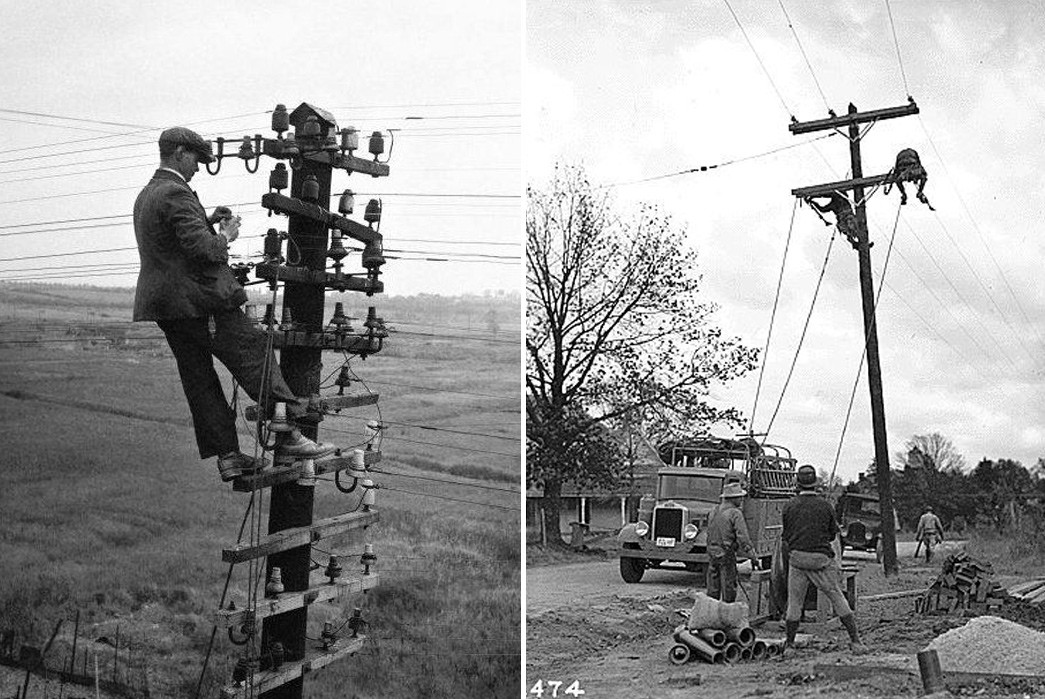
Early line work from Northwest Lineman College and 1935 rural electrification work from Northwest Lineman College via Border States
Being used for both climbing and standing on precarious overhangs, lineman boots need to be stable and have a solid construction. They usually have a wide, thick shank, the load-bearing piece of metal between the midsole and outsole, which doesn’t flex, providing stability and support whilst climbing. The soles themselves are made of heavy, durable rubber—both for grip and because they’re often the only thing separating them from a high-voltage electrical current. They also have a higher arch than most work boots so that the midfoot can be locked in, providing additional grip whilst climbing.
All in all, the traits and trademarks of the lineman that make it such an intriguing boot were to make them stronger, sturdier, and safer in both such a specific and dangerous line of work.
Lineman vs Logger
Whilst linework spread, there was also a huge boom in logging in the Pacific Northwest. Both professions needed specialized boots that allowed them to climb and grip without difficulty. In the logging industry, brands like White’s were developing logger boots with, like lineman boots, a high arch, but unlike lineman boots, a tall heel to help keep their feet out of the wet, marshy ground.
Despite their design differences, some loggers wear lineman boots and some linemen wear logger boots. A quick search of “lineman” on the Red Wing website comes up with their Style 4420, the LoggerMax, showing that the distinction is really up to the wearer.
History of the Lineman Boot
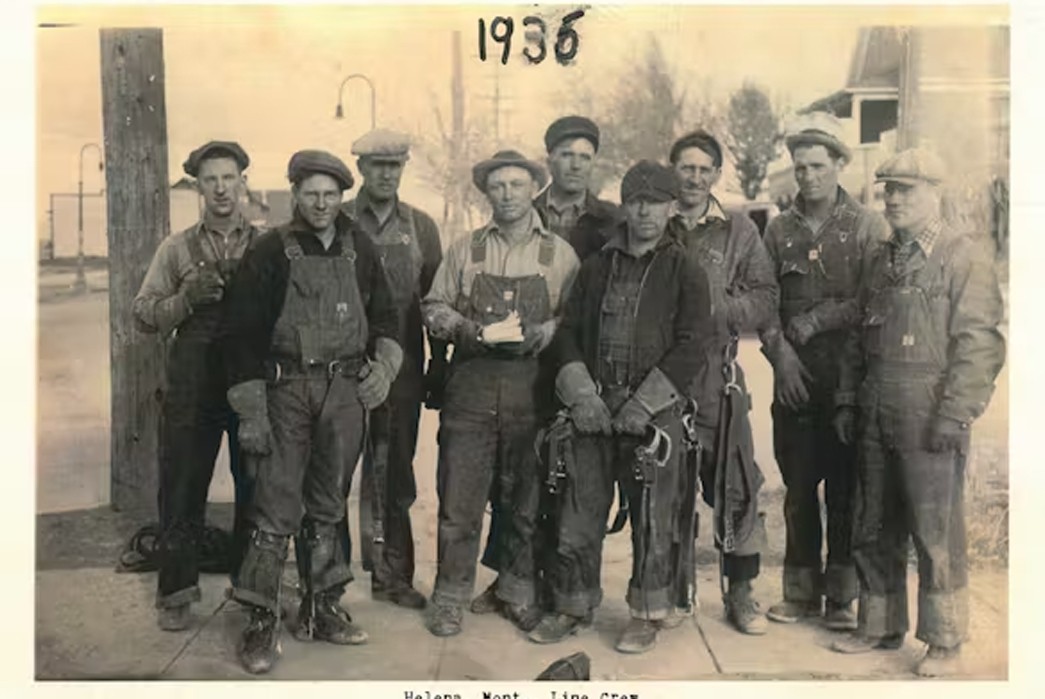
The Line Crew from Helena, Montana in 1936 via T&D World
The history of the lineman boot is closely linked with the history of electrical transmission and the spread of electrical lines across the country. In 1889, 13 miles of electric transmission line was put up between Oregon City and Portland, Oregon, the first of its kind. At 4000 volts, it was a breakthrough. From the on lines started to be put up across the country and 26 years later, in 1925, half of all American homes had power. Then President Roosevelt’s New Deal in 1936 supercharged this—as well as new jobs, including many working on the lines, the Rural Electrification Act ensured that linesmen would be needed nationwide. By the end of the War, 85% of American homes had power and virtually every home in the US had electricity supplied to them by 1960.
Lines were built across America for the best part of seventy years and generations of linesmen were required to build, service, and upkeep them. Though, the combination of climbing and high-voltage electricity meant that the job was dangerous and often fatal—one third of all linesmen were killed on the job between the 1920s and ’40s. The linesmen needed proper gear to protect them whilst they working, especially their feet which were their only point of contact with the pole.
This led to the development of what we now know as lineman boots in the 1930s and ’40s. With the demand for lineman boots needing to be filled, we see several different brands developing their own pairs around the same time. Otto White of White’s Boots, shortly after trademarking his Arch Ease for logger boots in 1926, introduced more boot styles in the 1930s than any other American boot company, including their trademark lineman which they continue to produce today.
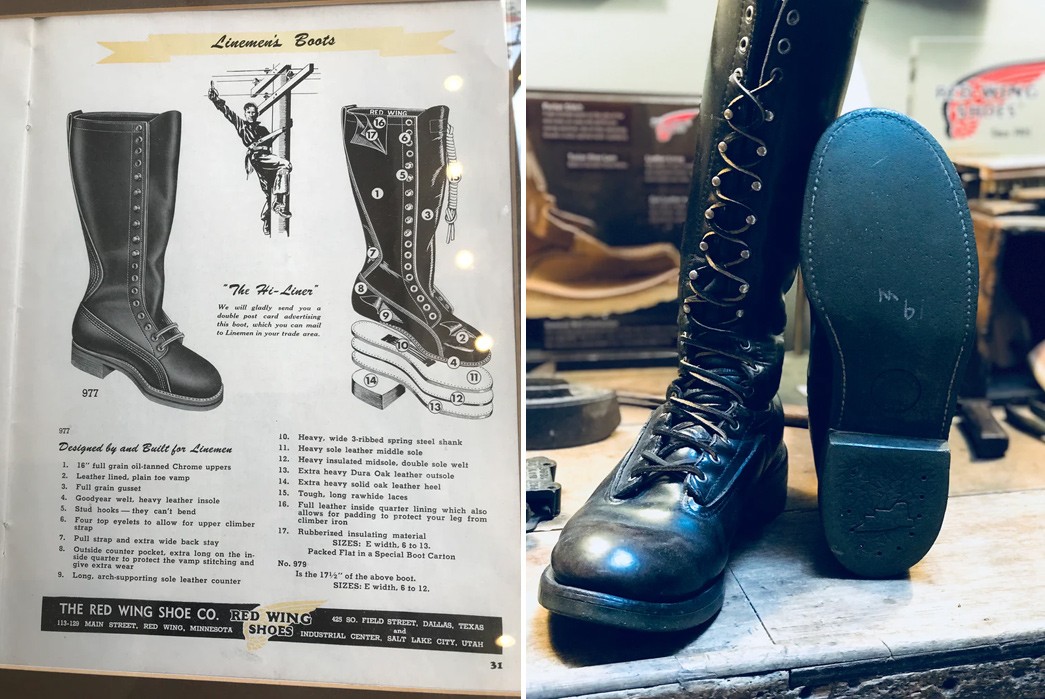
1951 catalog entry for The Hi-Liner and 1960s’ Style 650 with green Union of Lineman soles via Red Wing
Meanwhile, Minnesota’s finest Red Wing introduced its first lineman boot in the 1940s, with a distinguishing lace-to-toe design, which provided a closer, more secure fit. Red Wing has had a number of lineman models throughout the years, including style 977 the “Hi Liners” in 1951. These 18-inchers had a leather outer sole and heel, which meant they were quickly replaced when rubber technology advanced. They released style 677 which was soon followed by 650, both of which had green Chemigum soles. This special green sole was a request to Red Wing from the Union of Linemen—to show their commitment to safety and mark the boot wearer as a union member.
Lineman Boots Today
Electrical lines haven’t gone anywhere so linework is still very much a profession today—there are now 2.7 million transmission towers in the US alone. Workwear and outdoor brands alike—including Carhartt, Columbia and even KEEN—are making modern versions of lineman boots. Modern lineman boots still have all the features that we can use to recognize them as linemans, but updated to meet modern safety standards.
Though, the distinctive nature of lineman boots that makes them so unique in the footwear world, also means that heritage brands continue to make leather lineman boots as they would have looked in the electrical boom of the early 20th century—both for work and for people looking to wear something that will last for a really, really long time.
White’s x Division Road LTT Lineman 350
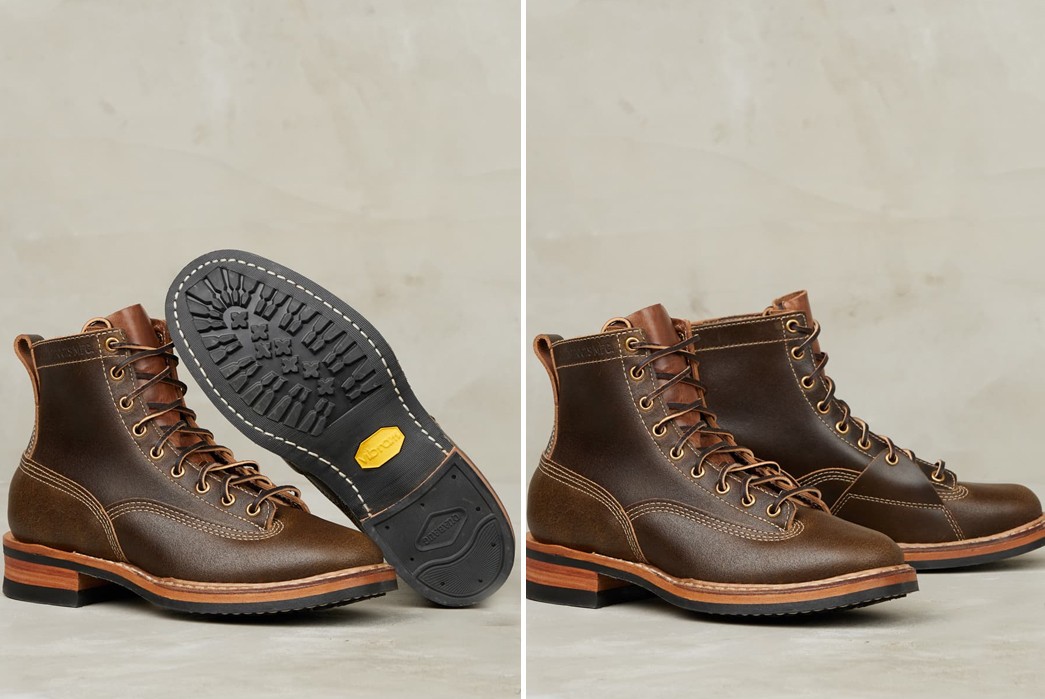
White’s x Division Road LTT Lineman 350 via Division Road
This collaboration between White’s and Division Road saw the Virginia-based store team up with master shoemaker and White’s CEO Eric Kinney—who has himself hand-sewn over 50,000 pairs of boots. For the LTT Lineman 350, they took inspiration from the original lineman boot produced by Otto White in the 1920s.
The collaborators created something truly great. Hand stitched in the US from Horween Leather Co‘s olive waxed leather, which will age beautifully revealing a sand-colored patina of the flesh side nap. To make sure the boots are as historically accurate as possible, they’ve also added that distinctive lineman patch and use White’s trademark Arch Ease and block logger heel.
Finally, they’ve paired White’s century-old hand-sewn welting methods with a tonally corresponding natural CXL (a combination of tanned leather) welt to make a pair of boots that will truly last a lifetime.
Available for $745 from Division Road.
Nick’s Handmade Boots Lineman Classic Arch
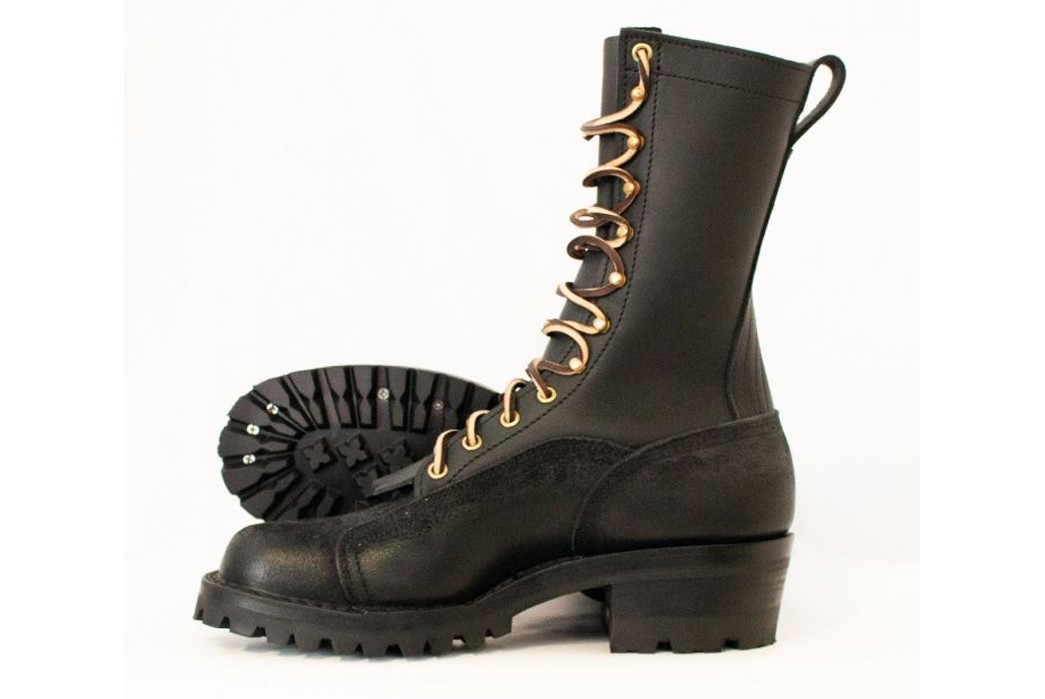
Lineman Classic Arch via Nick’s Handmade Boots
Nick’s Lineman Classic Arch boots are handmade to order in Spokane, Washington, where they have been for almost sixty years. Nick’s was founded in 1964 by Russian émigré and second-generation shoemaker Nikolai Blahuczyn. After immigrating to New York after the Second World War, Blahuczyn eventually settled in Washington state where he worked for White’s Boots for eight years before founding Nick’s.
Nick’s Linemans are built with safety as standard. Constructed from 7-80z oil-tanned leather, the boots feature a Vibram sole, a flat reinforced leather shank, Nick’s kiltie tongue, and a built-in lineman patch. The boots come in 10 inches as standard, but they are also available to add an extra 6 inches to make them even safer. Resoleable and recraftable, the Linemans are Nick’s stiffest flexibility so as well as looking great, they can still be used by lineworkers.
Available for $639 from Nick’s Boots.
White’s Longliner
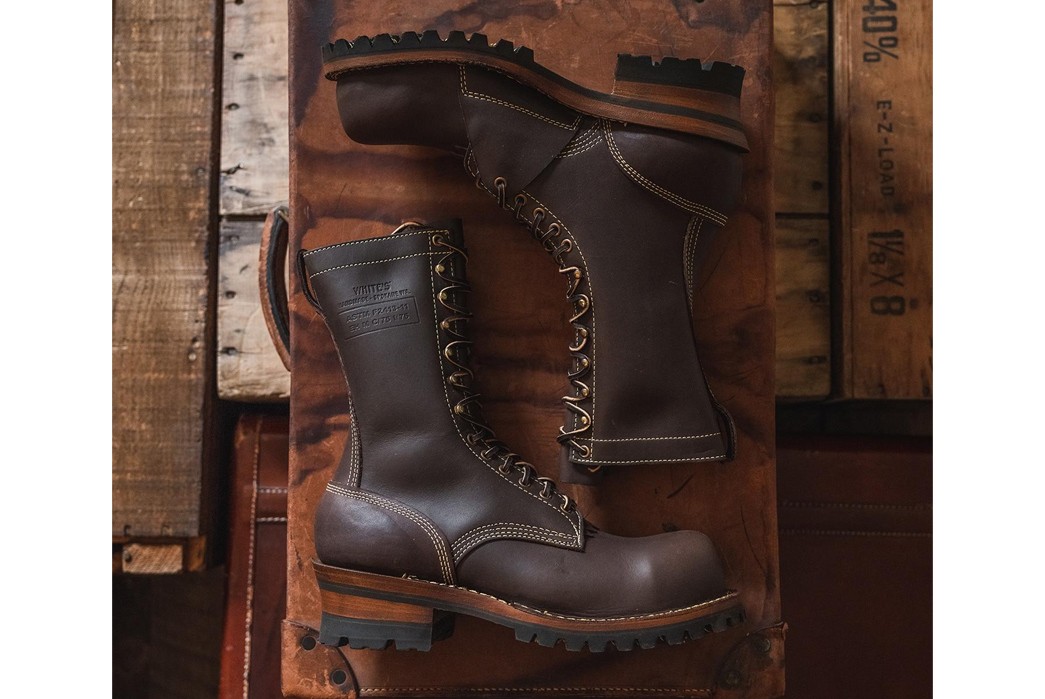
Longliner via White’s
Another pair of handmade lineman boots from White’s, these are “built for the hazardous call of a lineman”. The White’s Longliner don’t mess around, they are designed and constructed with protection in mind. Namely, with Kevlar upper and sole stitching for added electrical protection and a Vibram Fire and Ice White Dot sole, which are oil resistant and can withstand temperatures between -4 and 482 degrees Fahrenheit.
The 10-inch full-grain water-resistant leather upper is built in the US with White’s stitchdown construction, which makes for a more secure fit. They also feature a leather midsole and shank and White’s proprietary Arch Ease. The White’s Longliner aren’t going to be causing you any trouble when you’re halfway up a pole.
Available for $694 from White’s.
Red Wing Loggermax
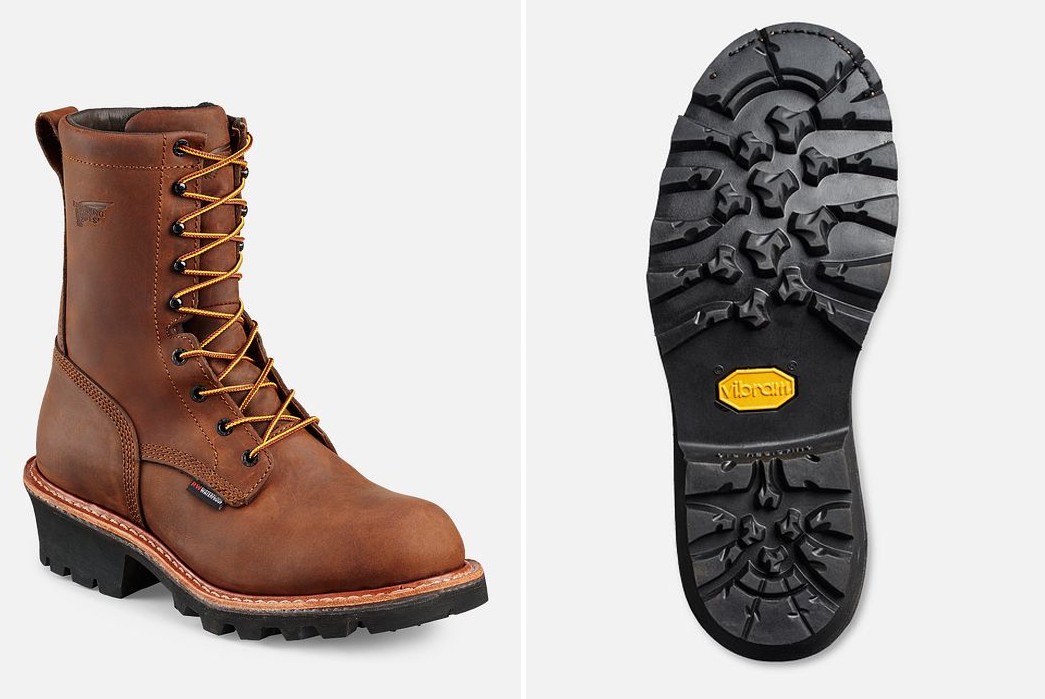
Loggermax via Red Wing
Okay, we know we noted the distinction between lineman and logger boots earlier on, but the Red Wing Loggermax is a pair of modern work boots constructed with both loggers and linemen in mind.
Though missing the iconic lineman patch, the Loggermax share a lot of other properties with historic and modern lineman boots. They’re a serious pair of shoes—with a Goodyear welt for built-in stability, a slip, oil, and chemical-resistant Vibram lug sole that can withstand temperatures up to 475 degrees Fahrenheit, and Red Wing’s three-layer waterproofing system. There’s also a steel lineman shank and Red Wing’s own nubuck, oiled leather. They’re built for work and built to last.
Available for $259.99 from Red Wing.



